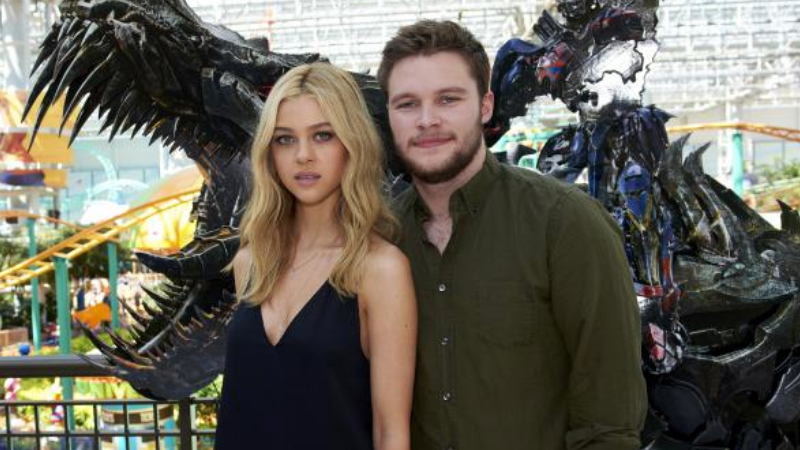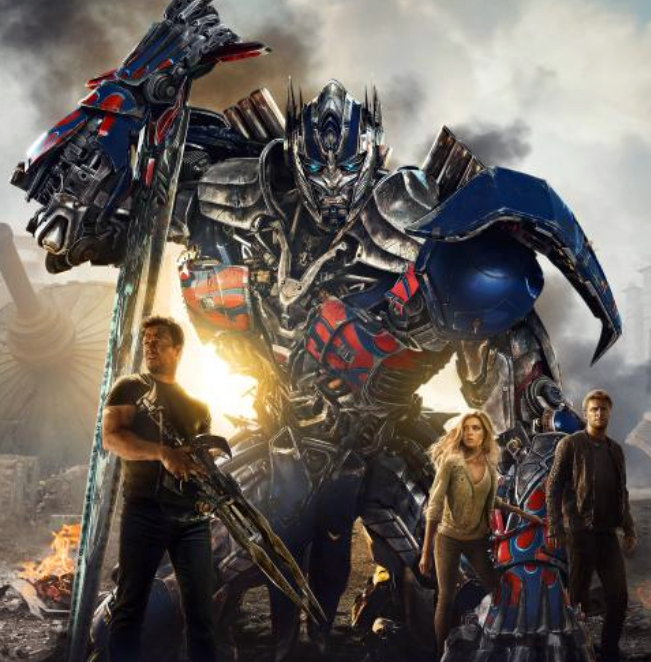Bigger is the operative word for the latest film in director Michael Bay’s “Transformers” franchise, “Transformers: Age of Extinction,” but not always in the way you would expect.
Can we say once again that there’s more than meets the eye?
“It’s a lot bigger — the effects are on a different level than anything that we’ve seen before,” actor Jack Reynor told me, joined by co-star Nicola Peltz, in a recent interview. “A lot of the camera work is very dynamic and very new, and at the heart of the film is a really great human story more than anything else.”
Opening in 2D, 3D and on IMAX screens nationwide on Friday, “Transformers: Age of Extinction” stars Mark Wahlberg as Cade Yeager, an auto mechanic who makes a discovery that not only draws the Autobots and Decepticons to them, but some very determined CIA agents who have a sinister agenda to carry out. Peltz stars as Cade’s daughter, Tessa, and Reynor plays her boyfriend, Shane Dyson.

“When we start the film, the Autobots are in exile and are afraid of humans, and humans are afraid of them,” Reynor said. “Through the relationship between Mark’s, Nicola’s and my characters, we try to restore their faith in humanity. It’s at different scale. We really hope it’s going to be an enjoyable thing for the audience.”
The odd part about working on “Transformers: Age of the Extinction,” Reynor says, is while he comes from the independent film world, working on this franchise at times was much like work he was used to.
“It was still an intimate environment, because at the end of the day, it was still Mark, Nicola and myself,” Reynor said. “That makes it feel smaller than you would imagine. Even though the movie is incredibly big and the effects are on a different level of anything we’ve seen before, between the three of us, at least, it felt like it was a small environment to work in.”
Peltz, who has done green screen work before in big-screen adventure “The Last Airbender,” said she was surprised by the amount of practical effects and props used in the film, something that ultimately aided everybody’s performances.
“I actually thought there was going to be more green screen than there actually was working on the movie,” Peltz said. “Instead, Michael makes these beautiful, huge sets, which are all real, and the car chases and the explosions are real. So having the tools and being in situations where we could use them was really amazing. Of course, we had to use our imaginations when talking to the Autobots and talk to nothing in those cases.”
At the time of the interview, neither Peltz or Reynor had seen the completed film yet, but already had the thrill of seeing themselves among Autobots, Decepticons and Dinobots for the first time with an 11-minute presentation of footage at CinemaCon in Las Vegas earlier this year.
“Watching the footage, you go, ‘Oh, my God, when I was filming that scene, there was nothing there.’ But when then add the CGI, it’s truly mind-blowing,” Peltz described. “It’s so crazy to watch knowing you were part of the experience.”
To help his actors stay engaged without any Transformers visually present, Bay found a way to keep his everybody working on the film motivated, Reynor said.
“It’s a real cool thing Michael does about every three weeks, where he puts together a sizzle reel, which has about 10 minutes of footage of film from the last three weeks we shot,” Reynor recalled. “Even without any Autobots in it or any of the rendered effects, it still looks really, really impressive, and it’s really exciting and fun. That was a big confidence boost to us all. We felt like we were making a really cool film, even though we hadn’t seen any Autobots or Decepticons while making it. It’s a really clever thing that Michael does and it really boosts the morale of the cast and crew.”
On set, Peltz said, Bay is ball of energy.
“Michael told me even before we started filming, ‘I move very quickly and you’re not going to be sitting in your trailer. Whether it’s your scene or not, you’re going to be on set learning and studying.’ I love that,” Peltz enthused. “His energy is so contagious because he is so excited about this film, so to work on it with him and feel that is really wonderful.”

Although Reynor was born in Colorado, he moved with his family to his mother’s native Ireland at age 2. One thing Reynor discovered, though, is no matter where you grow up, the Transformers — which began as Hasbro toys and were featured in cartoon form before becoming big-screen characters – will eventually find you.
“Since it was a Japanese concept and was around about 25 or 30 years before they made the first film, and it expanded across Europe quite quickly,” said Reynor, 22. “The generation before me grew up watching ‘Transformers’ on TV in Ireland, so it was definitely something I was exposed to in a big way and I had a full line of toys. I’ve always known of ‘Transformers’ because I’ve always been a fan of it, so to eventually to become a part of the franchise myself was an incredible opportunity.”
In a way, Reynor said, Transformers toys prepared him to work on the film, because while playing with the figures, he was making movies in his mind.
“The cool thing is, it doesn’t change a lot when you’re standing there on the set of the franchise yourself,” Reynor said. “You can try to relate to what you’re doing the same way you did when you were a kid. It brings a level of authenticity to what you’re doing and it makes it tangible for you in your own head. It really helps your performance.”
Being around six brothers growing up, Peltz, 19, more than had her share being around Transformers toys in her youth.
“I definitely knew of Transformers growing up, but it wasn’t only a boys thing,” Peltz said with a laugh. “I didn’t play with any of the toys, but my oldest brother loved them and my two youngest brothers are obsessed with the movies. All of them are very, very excited for me because of the film.”


